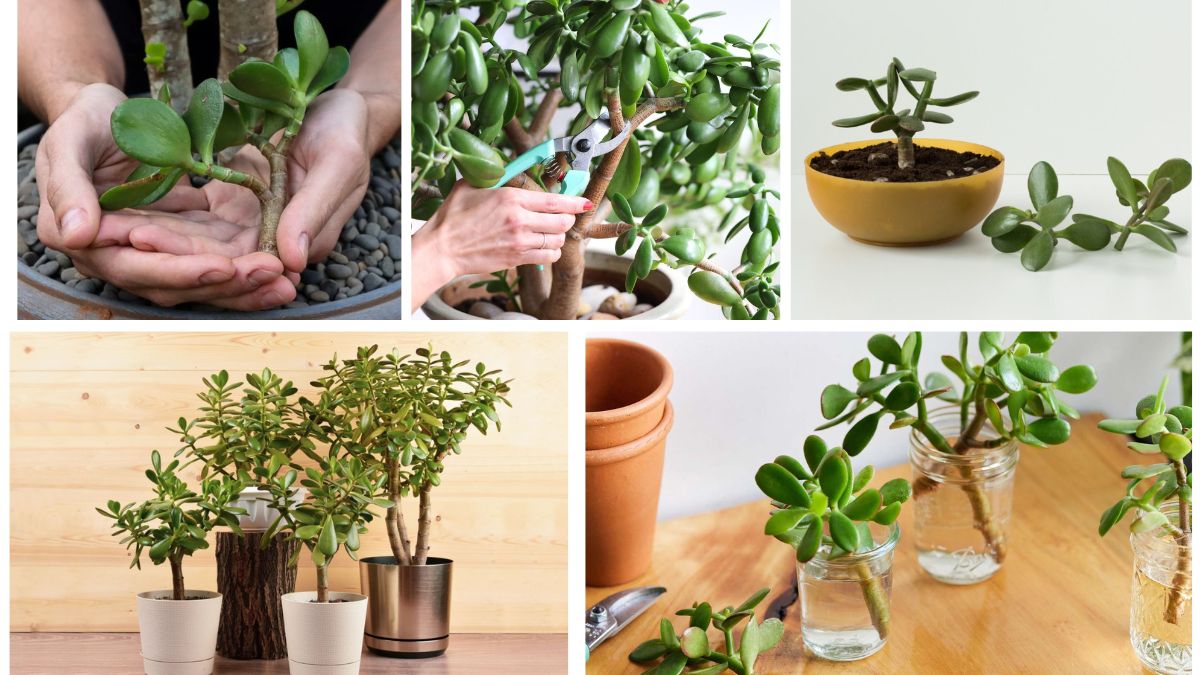Jade plants (Crassula ovata) are among the most beloved indoor succulents, admired not only for their thick, glossy green leaves but also for their symbolic meaning of prosperity, good luck, and longevity. Many cultures consider them a “money plant” or “lucky plant,” making them a popular choice for homes and offices. The great news is that jade plants are also very easy to propagate, especially from cuttings. With the right steps, you can multiply your jade collection or share the charm of these lucky plants with family and friends.
This guide will walk you through the entire process of growing jade cuttings, from preparation to aftercare, ensuring healthy, thriving plants that can last for decades.
Why Grow Jade Plants from Cuttings?
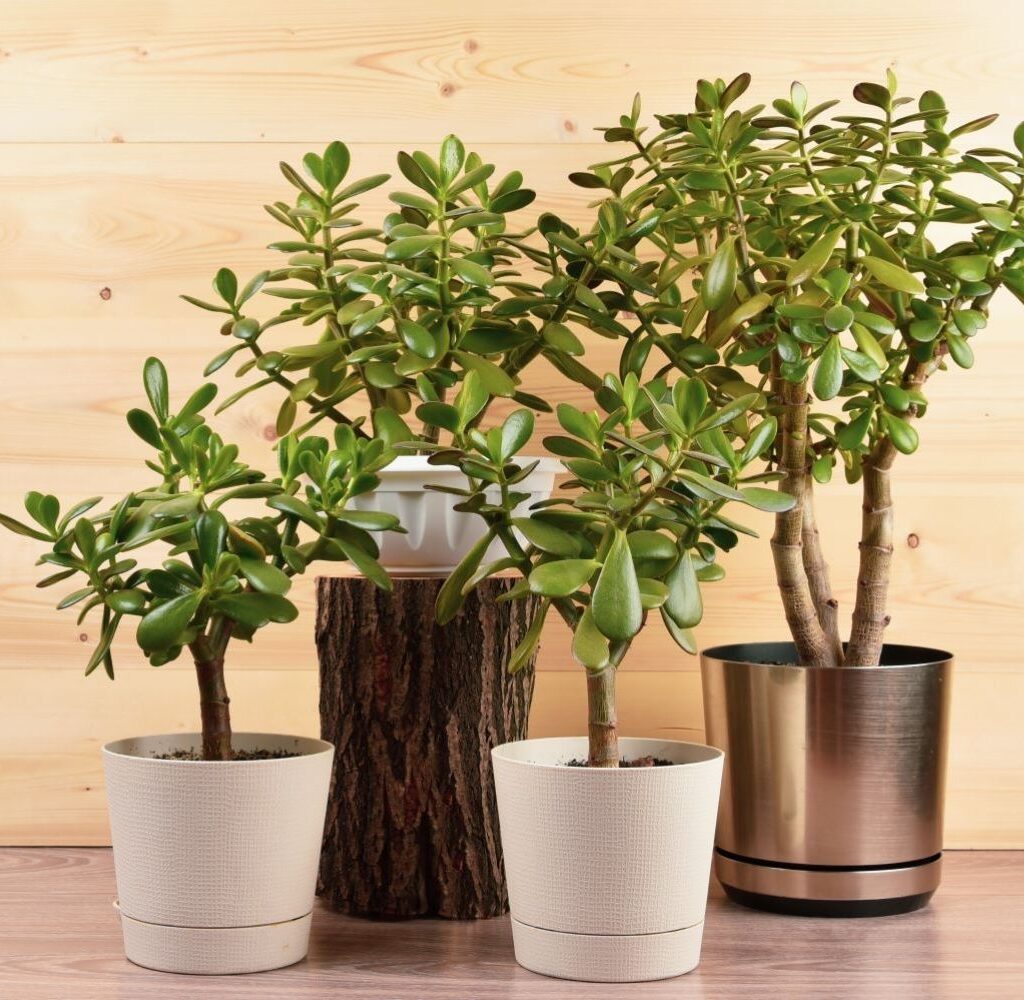
Growing jade plants from cuttings offers several benefits:
- Cost-effective: Instead of buying new plants, you can expand your collection with just one parent plant.
- Easy propagation: Jade plants root easily in soil or water, making them beginner-friendly.
- Sentimental value: Plants propagated from cuttings of an older jade plant often carry emotional meaning, especially if the parent plant has been in the family for years.
- Symbolism of luck: Propagating and gifting jade cuttings is believed to bring prosperity and positivity.
Step 1: Choosing the Right Cutting
The success of propagation depends heavily on choosing a healthy cutting.
- Select a healthy, mature stem from the parent plant. Avoid young, tender shoots or overly woody, old stems.
- Look for stems that are 3–6 inches long, with at least two pairs of leaves.
- Make sure the cutting is free of pests, rot, or disease.
Tip: If you notice shriveled or wrinkled leaves, allow the plant to rehydrate by watering a few days before cutting.
Step 2: Making the Cut
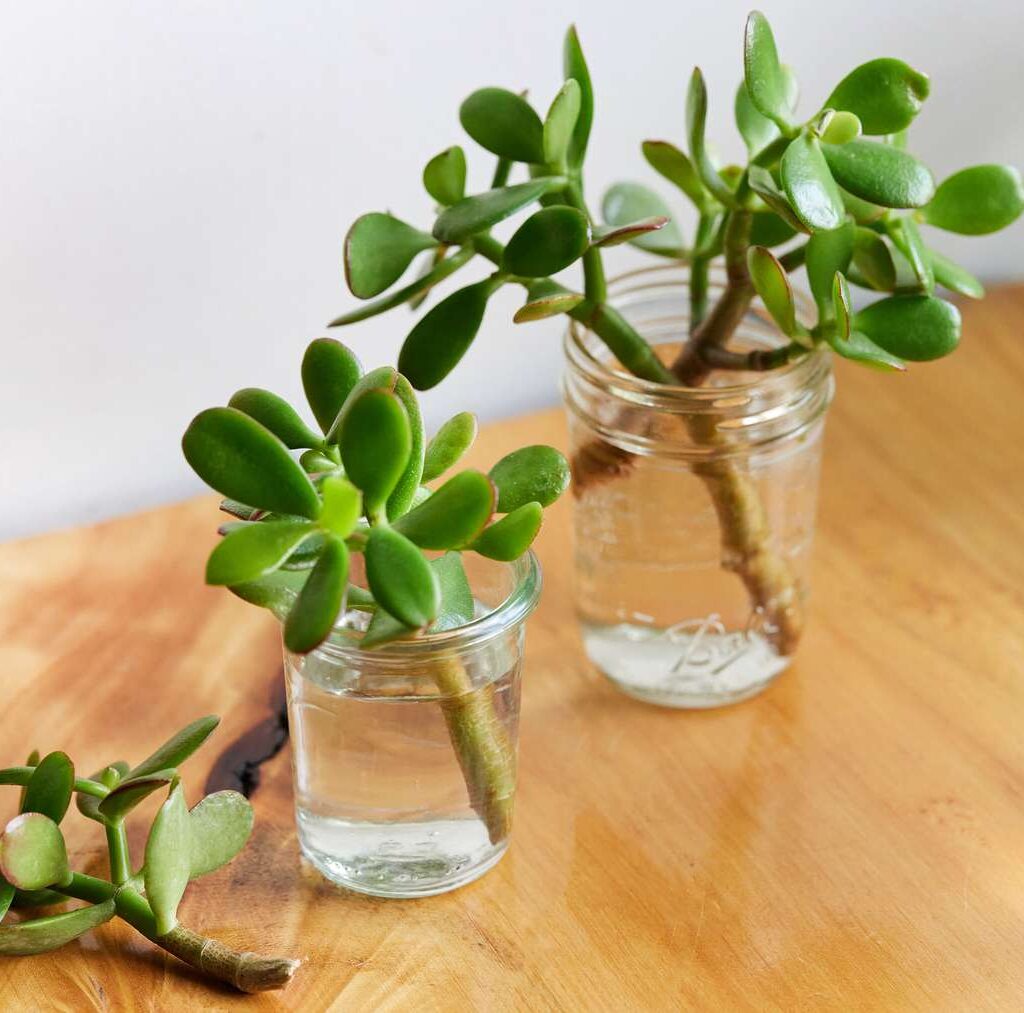
Use sharp, clean tools to prevent damage or infection.
- Sterilize a pair of scissors, shears, or a knife with rubbing alcohol.
- Cut the stem cleanly at a 45-degree angle, just below a node (the point where leaves attach to the stem).
- If you are propagating multiple cuttings, place them on a clean tray or paper towel.
Step 3: Letting the Cutting Callous
Unlike some houseplants that can be planted directly, jade cuttings need to dry before planting. This is crucial for preventing rot.
- Place the cuttings in a dry, shaded area with good air circulation.
- Allow them to rest for 3–7 days, depending on the size of the cutting.
- The cut ends will form a dry, hardened layer (a callous) that protects them when planted.
Note: Do not rush this step! Planting jade cuttings too soon often leads to rotting.
Step 4: Preparing the Soil
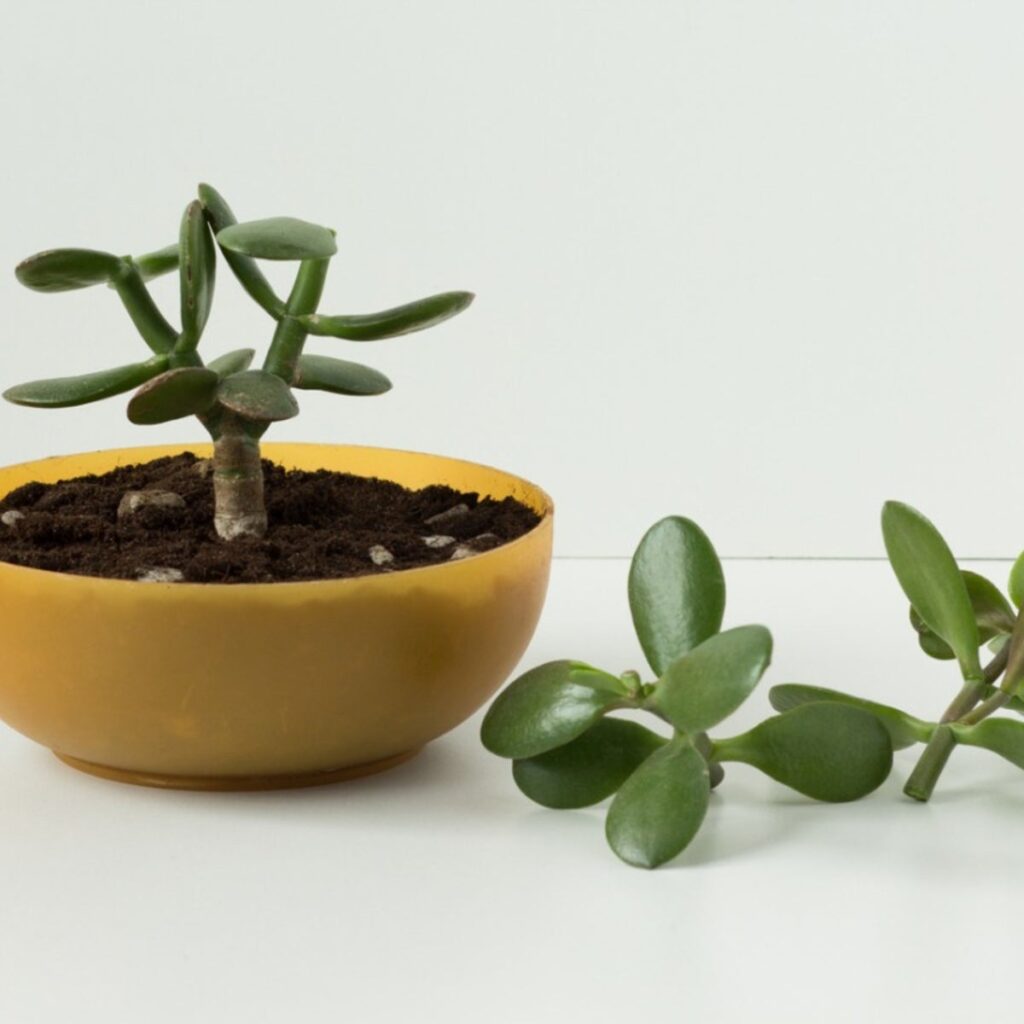
Jade plants are succulents, so they thrive in a fast-draining soil mix. Regular potting soil retains too much moisture, which can cause root rot.
- Best Soil Mix: Combine
- 2 parts succulent or cactus soil,
- 1 part perlite or pumice (for drainage),
- 1 part coarse sand (optional, for extra aeration).
Ensure the pot you use has a drainage hole to prevent water buildup. Clay or terracotta pots are ideal as they allow excess moisture to evaporate.
Step 5: Planting the Jade Cutting
After the cuttings have calloused:
- Fill a small pot with the prepared soil mix.
- Insert the cutting about 1–2 inches deep into the soil.
- Press the soil gently around the base for support.
- For leaf cuttings, place the leaf flat on the soil surface and lightly press it down.
Do not water immediately after planting—give the cutting a few days to settle and start forming roots.
Step 6: Watering and Care During Rooting

The key to successful rooting is balancing moisture and dryness.
- First Watering: Wait at least 5–7 days after planting before watering. This prevents the fresh wound from rotting.
- Watering Frequency: Water sparingly, only when the top 1–2 inches of soil are dry. Overwatering is the most common cause of failure.
- Light Needs: Place the pot in bright, indirect light. Too much direct sunlight can scorch the cutting before it develops roots.
- Temperature: Ideal rooting temperatures are between 65–75°F (18–24°C).
Roots usually begin forming within 2–4 weeks, though larger cuttings may take longer.
Step 7: Transplanting and Long-Term Care
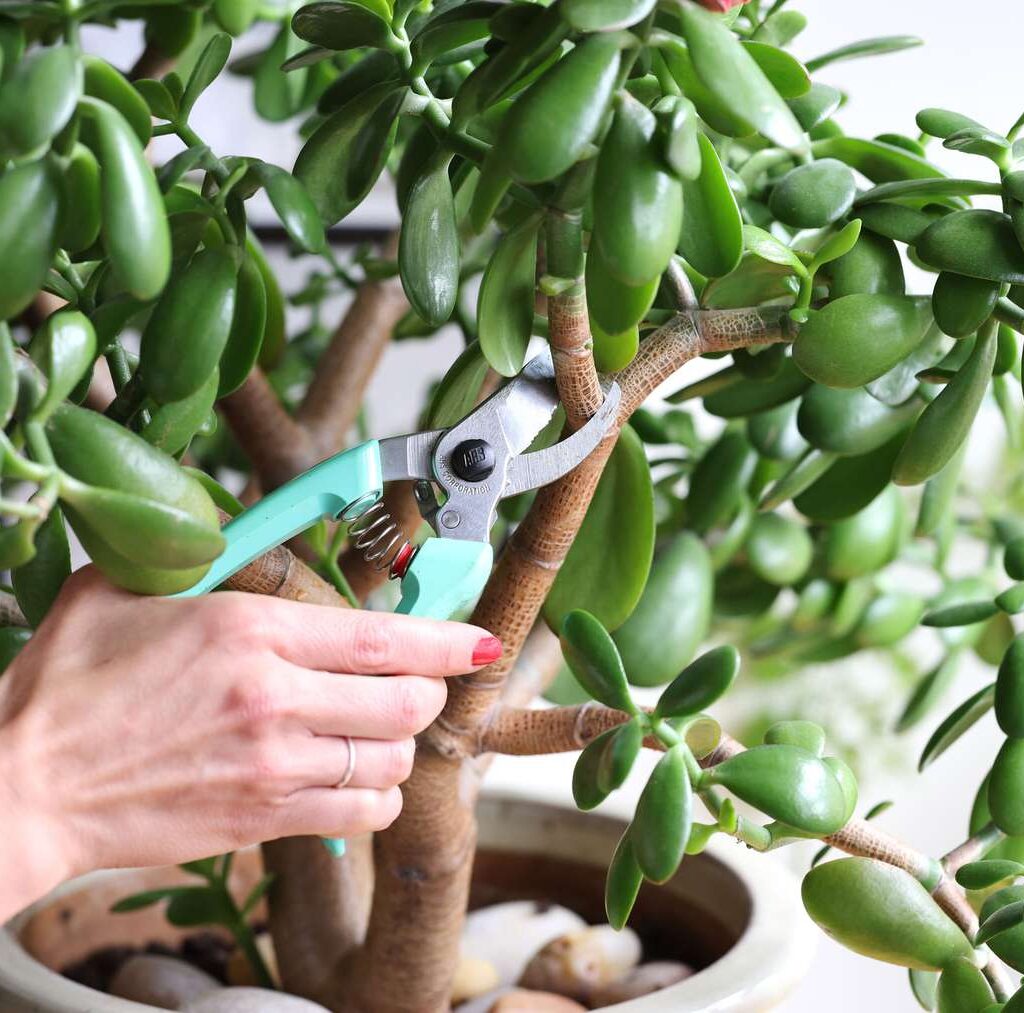
Once the jade cutting develops a strong root system (typically after 6–8 weeks), you can repot it into a slightly larger container.
- Choose a pot that is 1–2 inches wider than the current one.
- Continue using a well-draining succulent mix.
- As the plant grows, prune occasionally to encourage branching and fuller growth.
Common Mistakes to Avoid
- Overwatering: The leading cause of jade cutting failure is soggy soil. Always let the soil dry between waterings.
- Skipping the callous step: Planting fresh cuttings without drying increases the risk of rot.
- Poor lighting: Too little light results in leggy growth, while too much direct sunlight can burn young leaves.
- Using heavy soil: Regular potting soil retains too much moisture and suffocates roots.
Benefits of Growing Jade Cuttings Indoors
Beyond their ease of growth, jade plants provide several benefits:
- Air Purification: Like many houseplants, jade plants improve indoor air quality.
- Low Maintenance: They require minimal watering and thrive with little attention.
- Aesthetic Appeal: Their glossy leaves and bonsai-like structure add elegance to any room.
- Symbolism: In Feng Shui, jade plants symbolize prosperity, friendship, and harmony.
Creative Ways to Display Jade Plants
Once your jade cuttings grow into strong plants, consider these decorative ideas:
- Mini Bonsai Style: Train your jade by pruning and shaping for a bonsai-like appearance.
- Desk Plant: Keep a small jade cutting in a ceramic pot on your work desk to bring good energy.
- Gift Plant: Propagate cuttings, place them in decorative pots, and gift them for housewarmings or birthdays.
- Cluster Planting: Plant several cuttings in one pot for a lush, full appearance.
Troubleshooting Jade Cutting Growth
- Leaves turning yellow: Likely due to overwatering. Let the soil dry out before watering again.
- Wrinkled, shriveled leaves: The plant needs more water. Increase watering frequency slightly.
- Slow growth: Ensure it gets enough bright, indirect sunlight.
- Root rot: If roots turn mushy, cut off the damaged part, let it callous, and replant in fresh soil.
Conclusion
Growing jade plants from cuttings is not just a fun and rewarding gardening project, but also a way to bring luck, beauty, and greenery into your home. With minimal effort and patience, you can turn a single parent plant into many thriving new ones. By choosing healthy cuttings, letting them callous, providing the right soil and light, and practicing careful watering, your jade cuttings will flourish into strong, long-lived plants.
Whether you grow them for personal enjoyment, home décor, or as gifts symbolizing good fortune, jade cuttings are a simple yet meaningful way to expand your indoor garden. With proper care, your jade plants can live for decades, becoming cherished companions that pass on prosperity and positive energy for generations.
